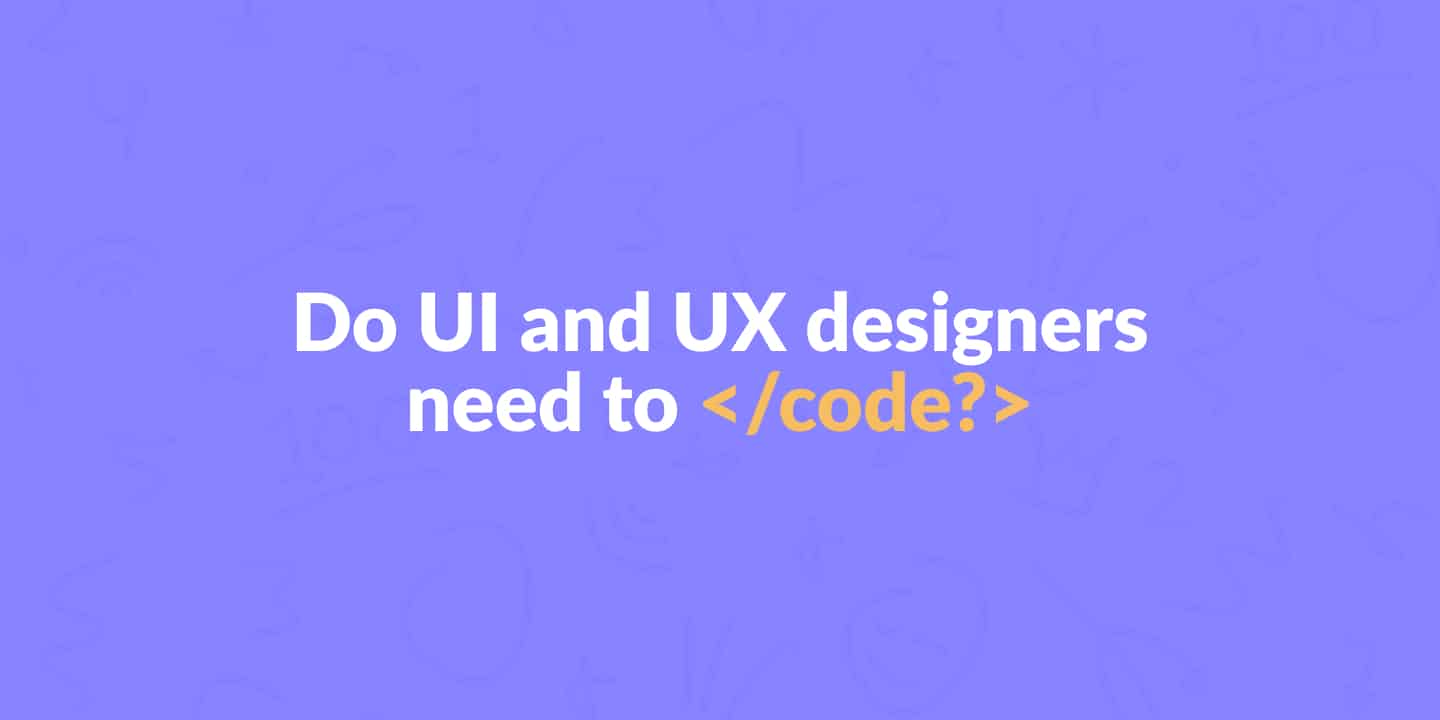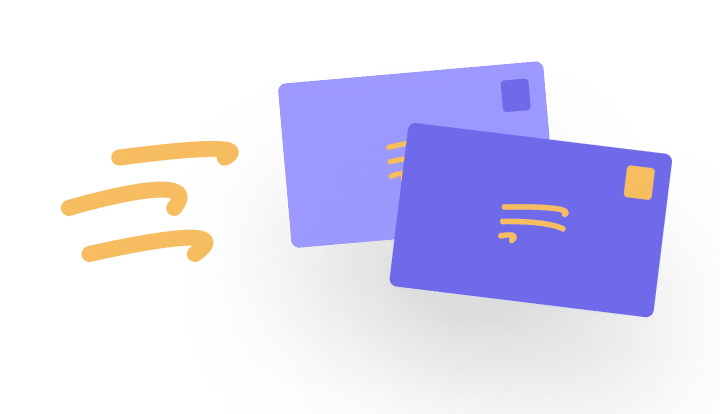One of the most common questions I get from aspiring designers is about programming. Do UI and UX designers have to code? Here’s your answer.
- Updated on August 20, 2024
Table of Contents 💡

Do UI and UX designers need to code?
No. As a UI and UX designer, you do not have to code. However, that doesn’t mean you shouldn’t. While it is perfectly fine to focus 100% on design, there are numerous benefits to being able to code as a designer.
Deciding if those benefits are relevant depends on your role and company type. We’ve recorded a quick 7-minute video where you can see us go through the roles and how much code is involved. Watch it here.
Project phases and design
In most cases, you can divide projects into three phases: understanding the problem, designing a solution, and, finally, building that same solution.
As a UX designer, you mainly work during the early stages of that process. The project is still in the concept phase, where coding isn’t as relevant. That’s why being able to code isn’t as important here.
Nonetheless, some companies expect you to be able to code. That’s because they combine UI and UX in one role. In that case, you’re also working in the second half of the software development process, with a much bigger emphasis on UI.
You’re prototyping and participating in developer support and handovers, all of which have some coding overlap. You could do without it, but having a basic understanding of (frontend) code makes your meetings during this project phase so much easier.
Finding a UX or UI job with and without coding
Being able to code is not a strict requirement for UI and UX designers. There are enough UX jobs with and without coding requirements. Here’s how you find the one that’s right for you
If you look at the job requirements of a specific job, you’ll see what a company expects of you. You’ll likely have to code at this job when you see an “HTML, CSS, and JS” requirement.
Of course, that’s okay if you want to code. But if you don’t, ask about it during the job interview to make sure you’re getting into a job that’s right for you.
The benefits of knowing how to code as a UX designer
I’ve been in UX for ten years. For the first half, I wasn’t able to code. I learned to later, and it is one of the best things I’ve done for my career.
Here’s a list of benefits of coding as a designer based on my career experience.
Working with other roles
As a UI and UX designer, you build bridges between technology, the business, and users.
You are a facilitator and a connector. The same applies to your role within the office. When you get hired as a UX designer, you will collaborate with technical roles like business analysts and developers.
It means you’ll encounter situations where knowing how to code is a useful skill to have.
- You will have to collaborate with developers. Knowing how they do their work makes your work as a UI and UX designer a lot easier.
- You know the technical boundaries of your design options beforehand. It will speed up your work and prevent you from starting over and doing your work twice. It also makes meetings with developers a lot easier for every participant.
- You can prototype your work yourself using tools like Axure or ProtoPie or even code a prototype.
More in demand as a freelancer
If you want to become a freelance UX designer, you need to code more. As a freelancer myself, I’ve heard the following question all too often.
“Can you also build it?”
My answer was always no; I couldn’t build the designs I made for my clients, and I’ve lost many leads because of it. That’s why I taught myself how to use Elementor (WordPress), Webflow, and basic frontend coding.
Knowing how to code is a massive benefit for freelance UX designers. Offering web design and development in one package puts you ahead of many other designers. You can also raise your prices that way.
Which programming language should I start with?
If you want to learn to code as a UI and UX designer, learning HTML, CSS, and JS is the best way to start. You’ll learn the basics of web design. That’s useful because you’ll work on many websites and web apps.
I also recommend WordPress, Webflow, and Framer. These are no-code tools for designers. Understanding frontend code will help you go past what a designer without frontend knowledge can do using these tools.
In addition, understand the difference between frontend and backend, how applications work under the hood, and how servers impact your design decision-making.
The above is ‘book knowledge’ and not ‘coding knowledge.’ It is good to know without actually having to do ‘under-the-hood’ coding work.
I decided to work on the backend development of one of my side projects myself. As a result, my conversations with backend developers in other projects went much easier than before.
If you want that same result, I recommend learning the basics of SQL and databases.
Next steps
UX design is a tech job. However, that doesn’t mean you need to code. Your focus is on the user experience of technology. Yet, knowing how to code can be valuable to any UX designer.
- You’ll be a better collaborator within your project team because you understand how to connect your design to code.
- As a freelance UX designer, being able to offer a full service makes you more in demand.
By the way, did you know that someone who can design and code at a high level is called a UX unicorn? Some say that’s impossible, but I believe you can be great at both.
Can you code as a UX designer? Maybe you’re the UX unicorn everyone in UX is looking for!

About the author
Hi! I'm Nick Groeneveld, a senior designer from the Netherlands with experience in UX, visual design, and research. I'm a UX coach that supports other designers and have completed design projects in finance, tech, and the public sector.
☎️ Book a 1:1 mentor meeting or let's connect on LinkedIn and Twitter.



